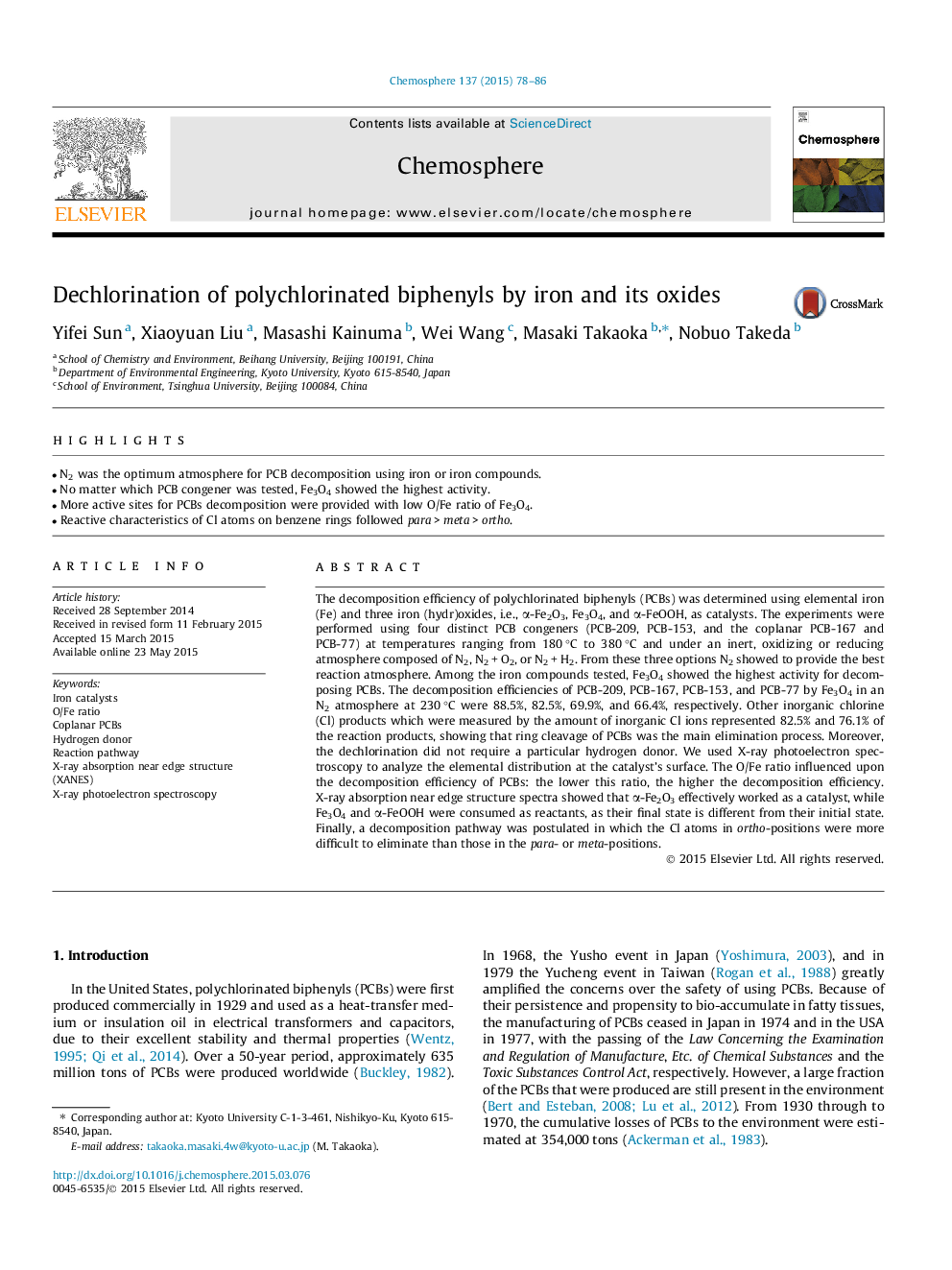| کد مقاله | کد نشریه | سال انتشار | مقاله انگلیسی | نسخه تمام متن |
|---|---|---|---|---|
| 4408225 | 1618834 | 2015 | 9 صفحه PDF | دانلود رایگان |

• N2 was the optimum atmosphere for PCB decomposition using iron or iron compounds.
• No matter which PCB congener was tested, Fe3O4 showed the highest activity.
• More active sites for PCBs decomposition were provided with low O/Fe ratio of Fe3O4.
• Reactive characteristics of Cl atoms on benzene rings followed para > meta > ortho.
The decomposition efficiency of polychlorinated biphenyls (PCBs) was determined using elemental iron (Fe) and three iron (hydr)oxides, i.e., α-Fe2O3, Fe3O4, and α-FeOOH, as catalysts. The experiments were performed using four distinct PCB congeners (PCB-209, PCB-153, and the coplanar PCB-167 and PCB-77) at temperatures ranging from 180 °C to 380 °C and under an inert, oxidizing or reducing atmosphere composed of N2, N2 + O2, or N2 + H2. From these three options N2 showed to provide the best reaction atmosphere. Among the iron compounds tested, Fe3O4 showed the highest activity for decomposing PCBs. The decomposition efficiencies of PCB-209, PCB-167, PCB-153, and PCB-77 by Fe3O4 in an N2 atmosphere at 230 °C were 88.5%, 82.5%, 69.9%, and 66.4%, respectively. Other inorganic chlorine (Cl) products which were measured by the amount of inorganic Cl ions represented 82.5% and 76.1% of the reaction products, showing that ring cleavage of PCBs was the main elimination process. Moreover, the dechlorination did not require a particular hydrogen donor. We used X-ray photoelectron spectroscopy to analyze the elemental distribution at the catalyst’s surface. The O/Fe ratio influenced upon the decomposition efficiency of PCBs: the lower this ratio, the higher the decomposition efficiency. X-ray absorption near edge structure spectra showed that α-Fe2O3 effectively worked as a catalyst, while Fe3O4 and α-FeOOH were consumed as reactants, as their final state is different from their initial state. Finally, a decomposition pathway was postulated in which the Cl atoms in ortho-positions were more difficult to eliminate than those in the para- or meta-positions.
Journal: Chemosphere - Volume 137, October 2015, Pages 78–86